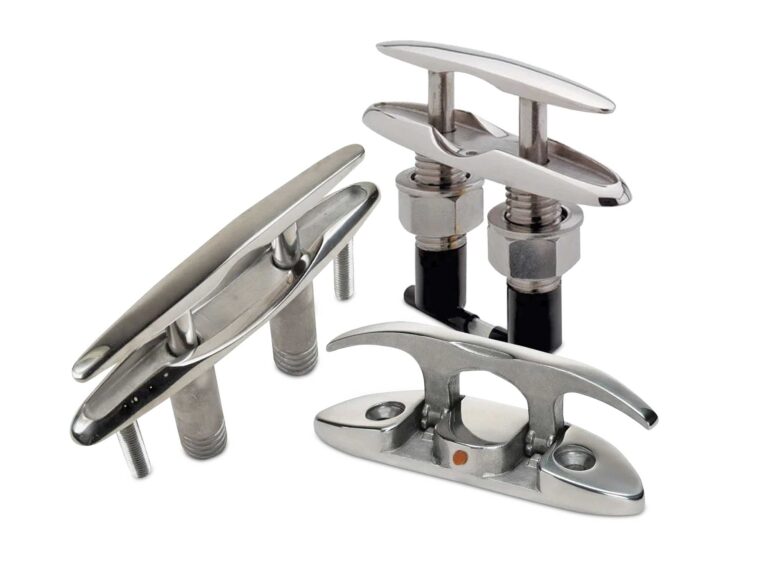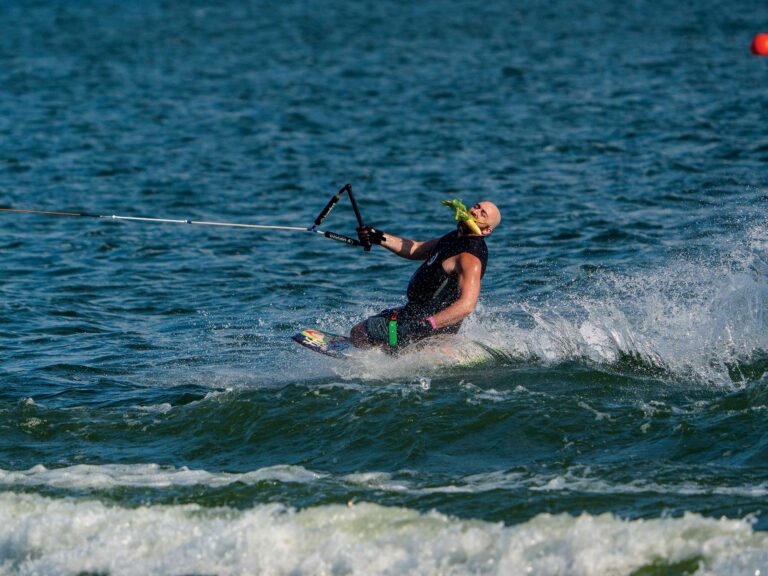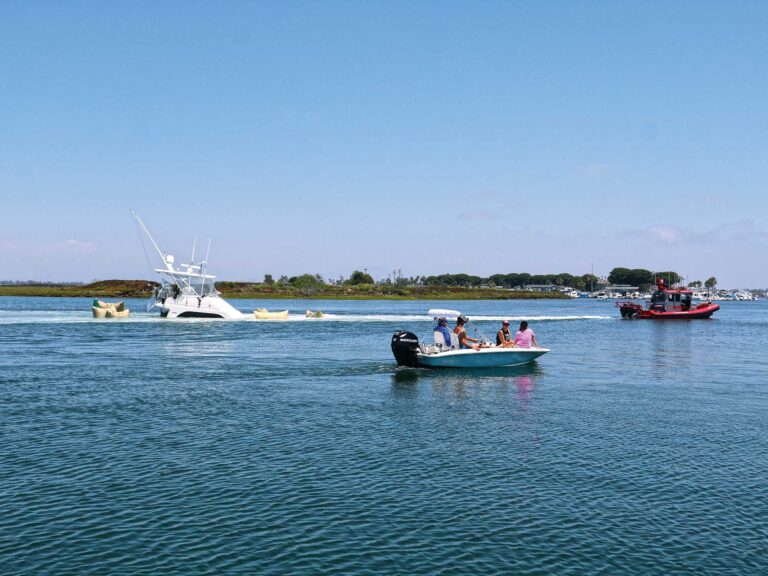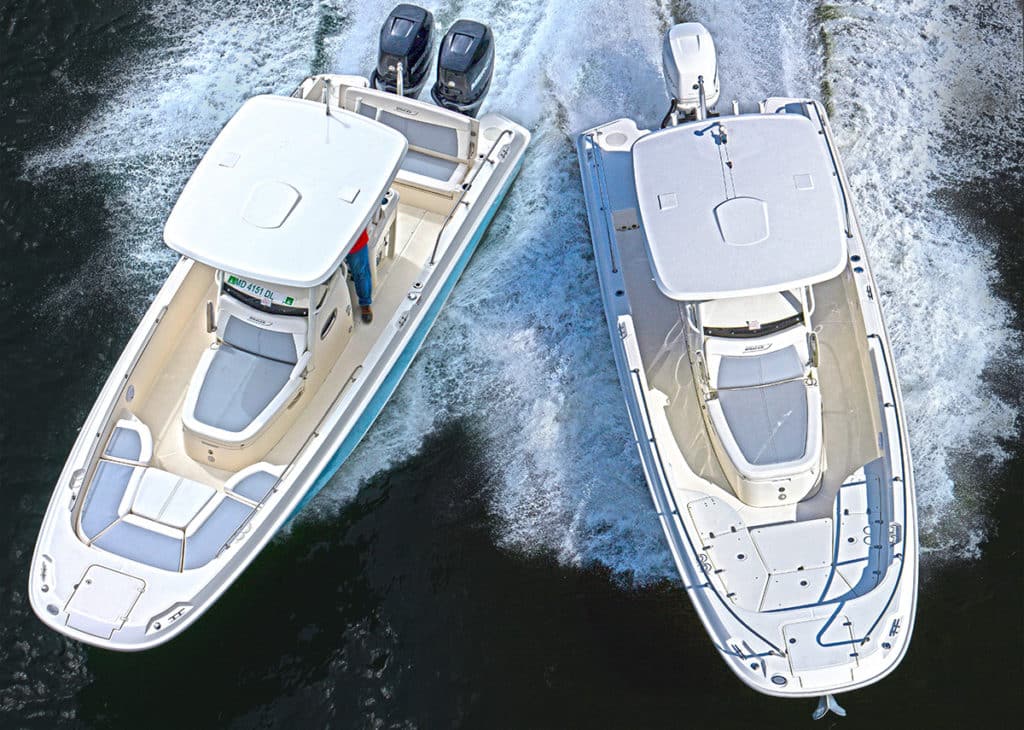
A 27-foot center-console boat with a single engine? What a silly idea. It’s surely underpowered and missing twin-engine redundancy. It must be an unrealistic loss-leader that Boston Whaler set up to attract customers whom the sales folks will quickly convince to upgrade to a proper pair of twins.
Or is it?
In today’s boating world, we assume that a 27-foot center-console has a deep-V hull (20 to 24.5 degrees of deadrise), weighs 5,000 to 6,000 pounds, and is designed to run offshore. Ergo, it needs twin engines. That’s a reasonable assumption, but it’s not always true. We ran the same model boat with both a single Mercury 300 hp Verado and twin 225 hp Verados to give you a true comparison. Twins or single? Read on.
Get Real
The place to start the discussion — as always — should be the boat’s intended mission(s). In this case, the 4,800-pound 270 Dauntless represents a low-side “family center-console” with a modified-V hull (18 degrees of deadrise at the transom). It’s long (27 feet 4 inches) but relatively narrow (9 feet 0 inches), with a shallow draft (17 inches). This boat’s design runs counter to the concept that only a wide, high-side hull is stable, seaworthy and safe. Stability, by the way, is determined not by beam alone but by hull volume on either side of the bottom’s centerline as well. The 270 Dauntless, in fact, follows the classic 3-to-1 length-to-beam ratio of some of the most efficient and able workboats of New England and the mid-Atlantic. In today’s marketing terms, its design is more as a multipurpose bay boat.
Now think about how the 270 Dauntless compares with offshore center-consoles of approximately the same weight. They are almost invariably a foot or two shorter and wider, with deeper V’s that require more power to push. Within Boston Whaler’s model lineup, for example, the closest center-console, weightwise, is the 250 Outrage. It’s actually 250 pounds heavier and rides on a 21-degree hull bottom, which makes it a great mini battlewagon for reasonable offshore ventures. This model too is available with a single engine, but most buyers will opt for the second for open-water ventures, and any larger deep-V center-console almost certainly boasts twins — or more.
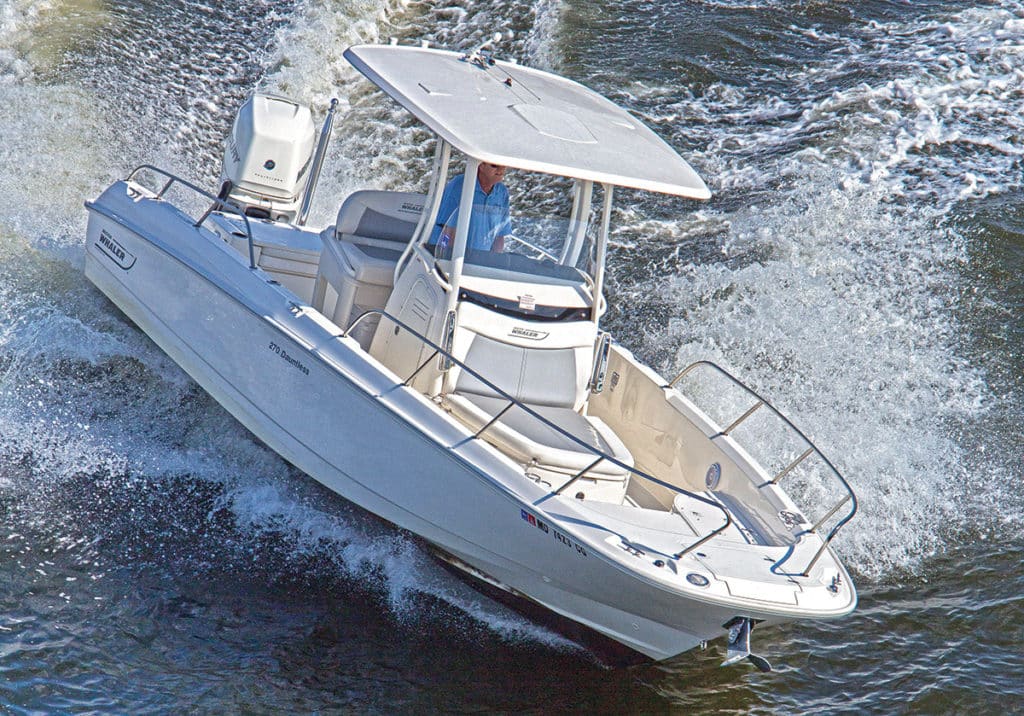
The 270 Dauntless is designed for fishing, all right, with plenty of rod holders, fish boxes and livewell capacity. With its flared bow, self-bailing cockpit and unsinkable construction, it is certainly seaworthy enough for prudent operation on coastal waters, but it’s not a hull that a hardcore blue-water angler will choose for canyon runs. Instead, its shallow draft and optional bow ladder set it up for double duty on beach picnics, while an optional swim patio folds down from the port side of the cockpit to provide safe water entry for swimmers and a removable transom pylon serves tow sports. There’s plenty of space inside the console for a dressing room/head that can accommodate, ahem, goodly size adult males. There’s ingenious and abundant seating in front of the console, complete with an adjustable table that offers comfortable lounging, sunning, eating and conversing on creek explorations and sunset cruises. The whole area, though, converts quickly to a casting deck for angling action. Given these inshore/nearshore missions, single-engine power just might make sense.
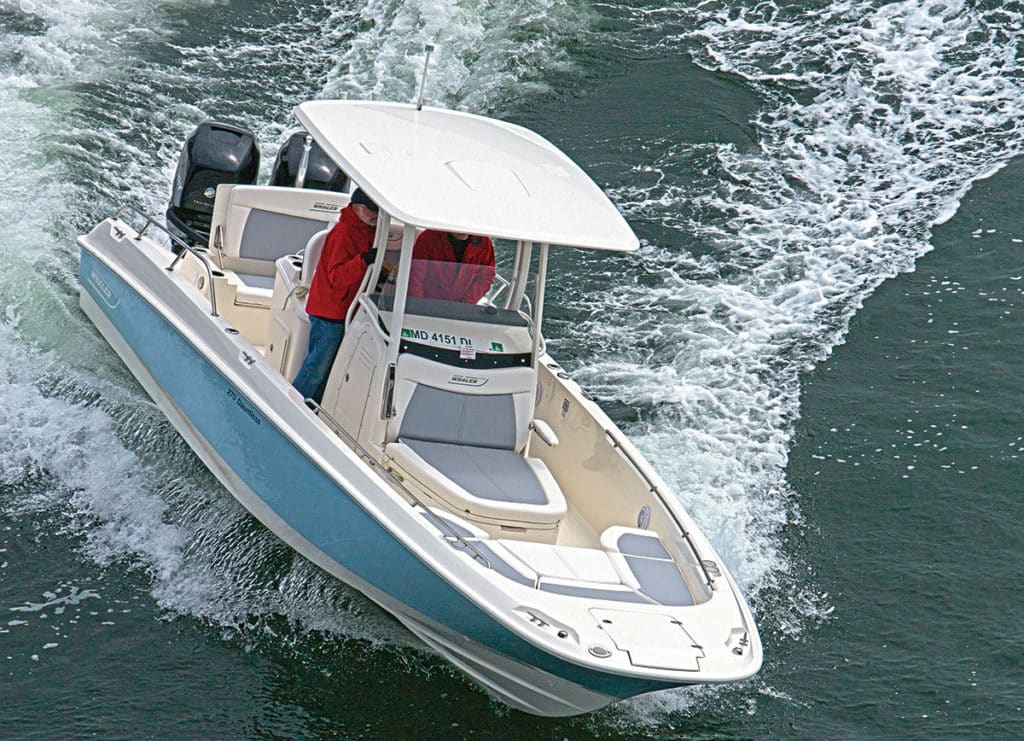
Afterthoughts
Two more things to think about: If you’re interested in the single-engine rig but are still concerned about whether you’ll have enough power, consider ordering your 270 Dauntless with Mercury’s new 350 hp Verado. As fellow contributing editor Charles Plueddeman pointed out in an April piece The Big, New Mercury Outboards, the company’s engineers did a lot more than just boost the supercharger’s pressure to get that 16.7 percent of extra power and keep the engine both durable and reliable. Those extra 50 are real ponies, and if you want them to work super-hard, feed them a tank of 91 octane fuel. They are still a lot less expensive than twin 175 hp engines.
Finally, whichever rig you choose, match the right propellers to your boating needs. Our test boats were both fitted with Enertia three-blade, stainless-steel props, but for real pulling power, especially with a single 350, a Revolution 4 four-blade may be the way to go. Just make sure that your engine(s) can turn up to the specific full-throttle operating range for Verados, 5,800 to 6,400 rpm. If not, you aren’t getting full horsepower at any upper range, and you’re overstressing the engine(s). Installing the wrong propeller is like choosing the wrong gear ratios in your car or truck.
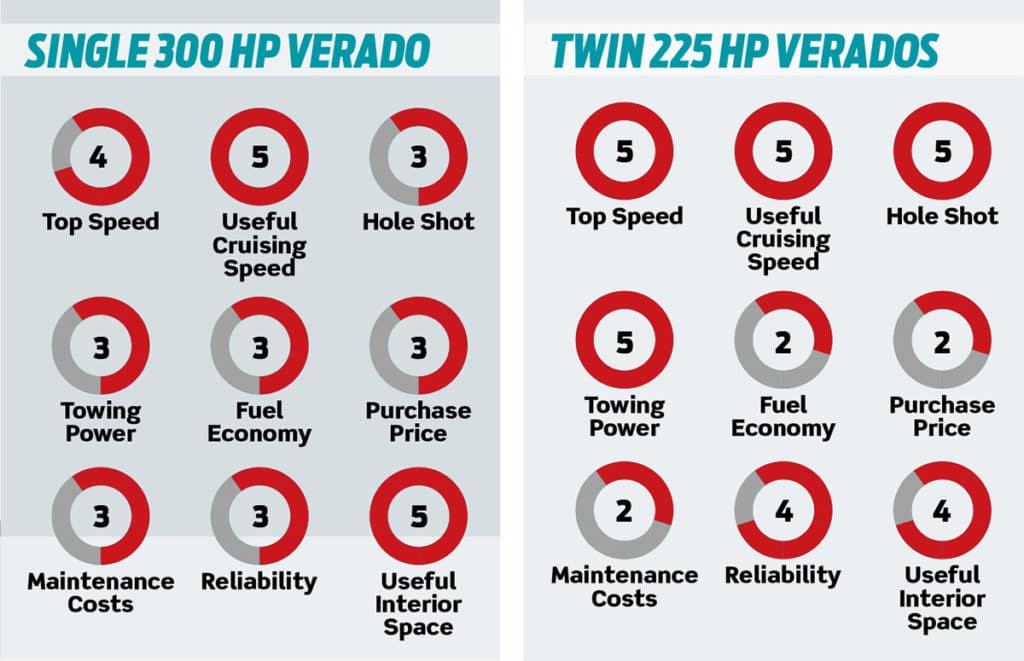
Pros and Cons
The single-engine boat tops out around 40 mph and cruises easily at speeds in the mid-20s. On our test day, it loped comfortably through a 1- to 2-foot chop at speeds to 4,500 rpm — 27.0 mph — realistic speeds for coastal bodies of open water like the Chesapeake Bay, where we tested. (I was especially sensitive to ride quality, since our sea trial included a photo shoot to which I was not invited, so I rode it out comfortably inside the console, sitting on the lid of the portable toilet.) Acceleration from the supercharged Verado was quick, especially at midrange speeds, but the big engine was otherwise quiet and silky-smooth.
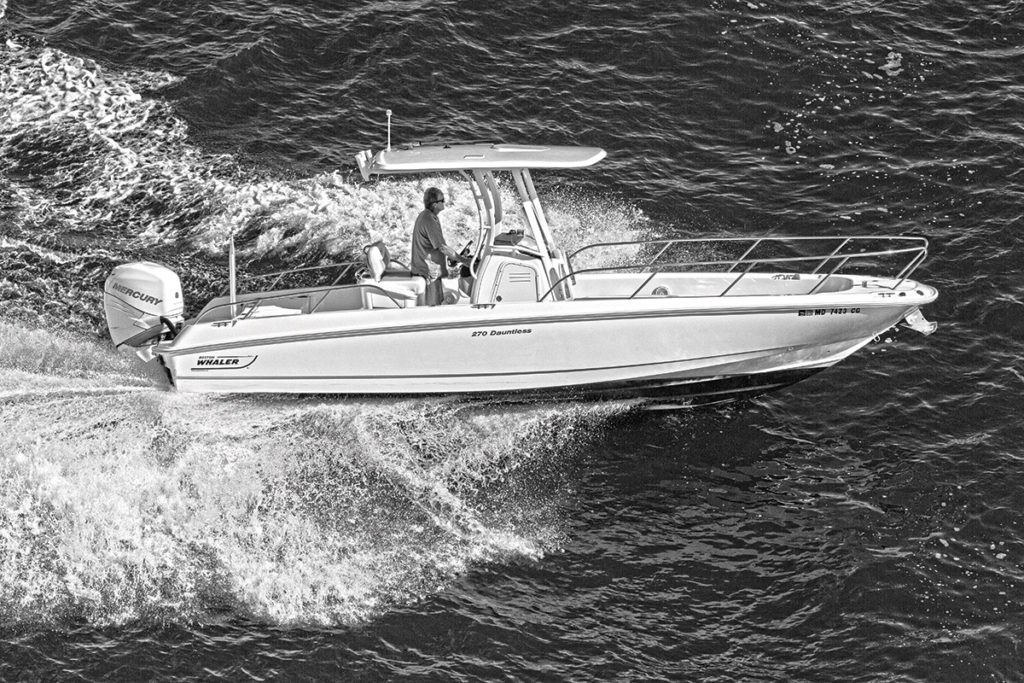
The twin-engine boat has, by contrast, truly brutal acceleration. The frame for the hardtop is integrated into the console’s structure, and it offers plenty of handholds. That’s good because crew need to hold on when the captain punches the throttles. Top speed in our test was 52.7 mph, with efficient cruising at 3,000 to 4,000 rpm (22.6 to 30 mph). That range of cruising speeds is reasonable for weatherwise exploration of coastal bodies of water from Buzzards Bay and Long Island Sound to Tampa Bay and Puget Sound, but safe or comfortable uses for that top speed will be less common.
So how do you make a decision? Remember the ground rules. They are for this boat and for your needs. Consider the following profile of attributes for each rig. If you want to count, you’ll note that both versions of the 270 Dauntless get at least 32 points out of 45 in my ranking. Each does certain jobs well, and both do some jobs equally well, but even a quick look shows different personalities.
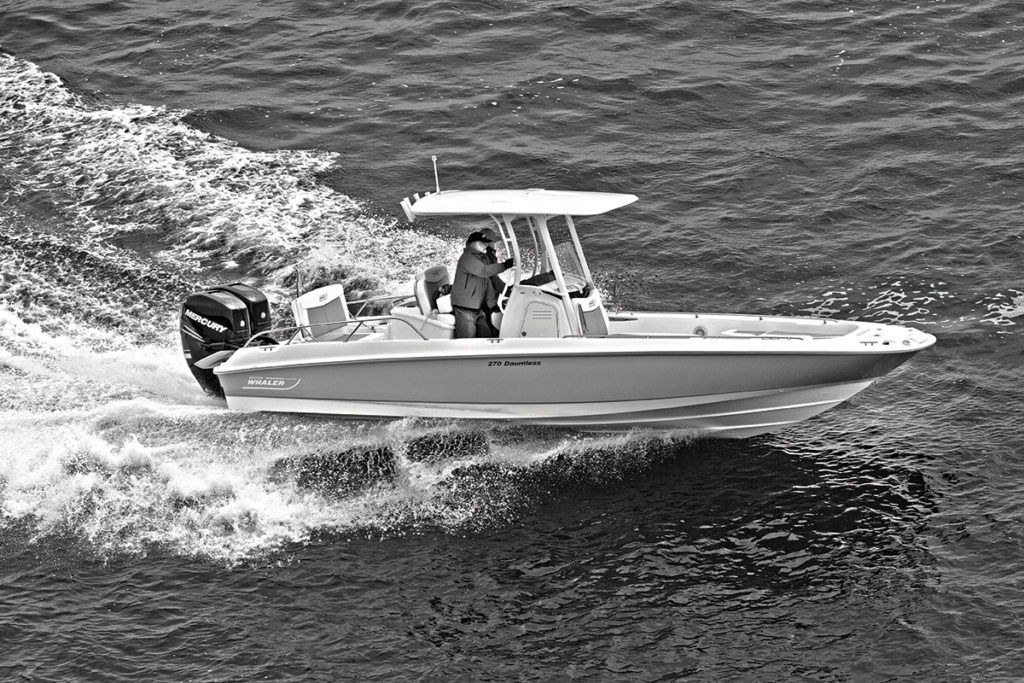
Top Speed
The twin-engine boat wins hands down. Think, though, about whether you have a use for it on the waters where you’ll run this boat.
Useful Cruising Speed
Both run well in that 20 to 30 mph range where most boaters do most boating, and they are both efficient even into the low 30s, though the twin-engine boat is still loafing there while the single is turning up a thousand rpm higher. On the other hand, when seas really force the skipper to throttle back, the single-engine boat is efficient even down into the teens.
Hole Shot
The twin-engine boat wins walking away, but its acceleration is so powerful that it borders on extreme. Remember that Verados are supercharged. They spool up immediately. For the same reason, the single 300 is no slouch itself, unless you have a dozen people aboard and a skier in tow.
Towing Power
The twin-engine boat wins again, of course. It’s a good choice if you’re going to pull a gang of barefoot skiers, or carry a lot of people most of the time. For families and casual tow sports, though, the single engine will be plenty.
Fuel Economy
For the best analysis, compare similar boat speeds (mph), not engine speeds (rpm). Yes, at cruising speeds, the numbers are close, but the single wins, even though it’s working harder than the twins. (Remember that two lower units create more drag in the water than one.) Then look at low speeds. There’s a big difference. How much of your running time will be slow, either by choice or by regulation or because you’ll be trolling a lot?
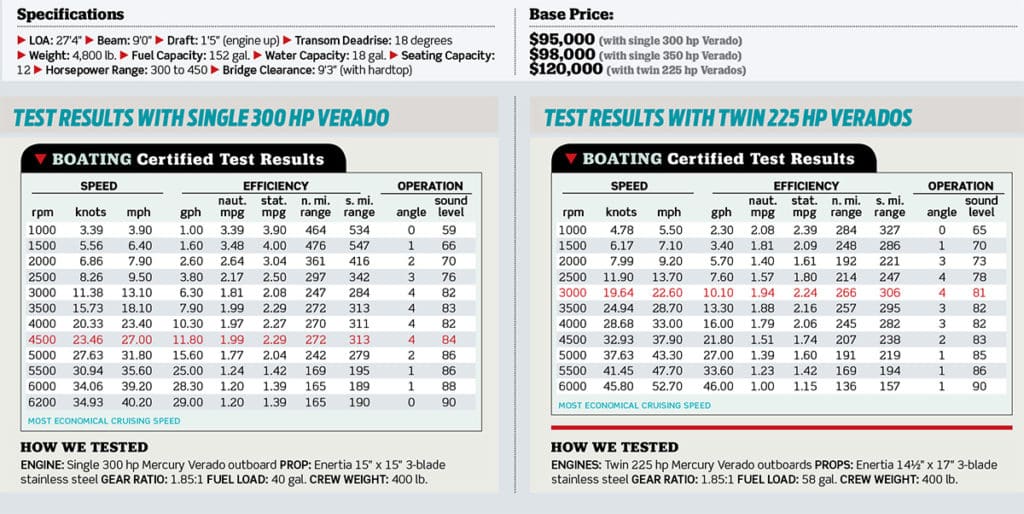
Purchase Price
Simple math: One 300 hp Verado gets more pluses because it’s less costly than two 225s. Ditto for propellers and rigging systems. How many seasons’ worth of fuel will you save with a single instead of twins?
Maintenance Costs
More simple math: One 300 hp Verado is less expensive to take care of than two 225s, so it gets more pluses. Ditto for propellers and rigging systems.
Reliability
Murphy’s Law loves boats, but modern outboards take lots of the risk out of running a single. That said, with twins there’s always one in reserve to get home.
Useful Interior Space
Boston Whaler’s 270 Dauntless is a really spacious boat to begin with, but if you’re buying one without the optional swim patio on the port side and plan to spend time on the swim platform, or if you’re worried about leading a big striper, cobia or salmon safely around the transom, notice how much space the twins take up versus the single.





